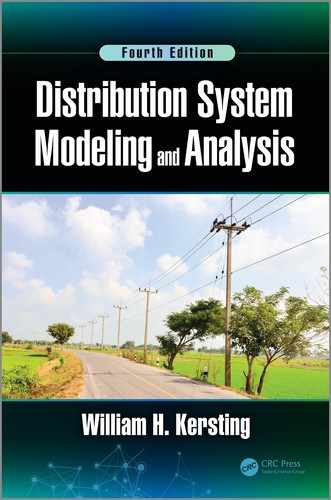Book Description
The latest edition includes new sections on grounded wye–delta short circuit feedback current and simulation of loop flow. The text illustrates methods that ensure the most accurate results in computational modeling for electric power distribution systems. It clearly explains the principles and mathematics behind system models and discusses the "smart grid" concept and its special benefits. Including numerous models of components and several practical examples, the chapters demonstrate how engineers can apply and customize computer programs to help them plan and operate systems. The book also covers approximation methods to help users interpret computer program results, and includes references and assignments that help users apply Mathcad and WindMil programs to put their new learning into practice.
Table of Contents
- Cover
- Half Title
- Title Page
- Copyright Page
- Table of Contents
- Preface
- Acknowledgments
- Author
- 1. Introduction to Distribution Systems
- 2. The Nature of Loads
- 3. Approximate Method of Analysis
- 4. Series Impedance of Overhead and Underground Lines
- 4.1 Series Impedance of Overhead Lines
- 4.1.1 Transposed Three-Phase Lines
- 4.1.2 Untransposed Distribution Lines
- 4.1.3 Carson’s Equations
- 4.1.4 Modified Carson’s Equations
- 4.1.5 Primitive Impedance Matrix for Overhead Lines
- 4.1.6 Phase Impedance Matrix for Overhead Lines
- 4.1.7 Sequence Impedances
- 4.1.8 Parallel Overhead Distribution Lines
- 4.2 Series Impedance of Underground Lines
- 4.3 Summary
- Problems
- WindMil Assignment
- References
- 4.1 Series Impedance of Overhead Lines
- 5. Shunt Admittance of Overhead and Underground Lines
- 6. Distribution System Line Models
- 7. Voltage Regulation
- 8. Three-Phase Transformer Models
- 8.1 Introduction
- 8.2 Generalized Matrices
- 8.3 The Delta–Grounded Wye Step-Down Connection
- 8.4 The Delta–Grounded Wye Step-Up Connection
- 8.5 The Ungrounded Wye–Delta Step-Down Connection
- 8.6 The Ungrounded Wye–Delta Step-Up Connection
- 8.7 The Grounded Wye–Delta Step-Down Connection
- 8.8 Open Wye–Open Delta
- 8.9 The Grounded Wye–Grounded Wye Connection
- 8.10 The Delta–Delta Connection
- 8.11 Open Delta–Open Delta
- 8.12 Thevenin Equivalent Circuit
- 8.13 Summary
- Problems
- WindMil Assignment
- 9. Load Models
- 9.1 Wye-Connected Loads
- 9.2 Delta-Connected Loads
- 9.3 Two-Phase and Single-Phase Loads
- 9.4 Shunt Capacitors
- 9.5 Three-Phase Induction Machine
- 9.5.1 Induction Machine Model
- 9.5.2 Symmetrical Component Analysis of a Motor
- 9.5.3 Phase Analysis of an Induction Motor
- 9.5.4 Voltage and Current Unbalance
- 9.5.5 Motor Starting Current
- 9.5.6 The Equivalent T Circuit
- 9.5.7 Computation of Slip
- 9.5.8 Induction Generator
- 9.5.9 Induction Machine Thevenin Equivalent Circuit
- 9.5.10 The Ungrounded Wye–Delta Transformer Bank with an Induction Motor
- 9.6 Summary
- Problems
- References
- 10. Distribution Feeder Analysis
- 10.1 Power-Flow Analysis
- 10.2 Short-Circuit Studies
- 10.3 Summary
- Problems
- WindMil Assignment
- References
- 11. Center-Tapped Transformers and Secondaries
- Appendix A: Conductor Data
- Appendix B: Underground Cable Data
- Index
